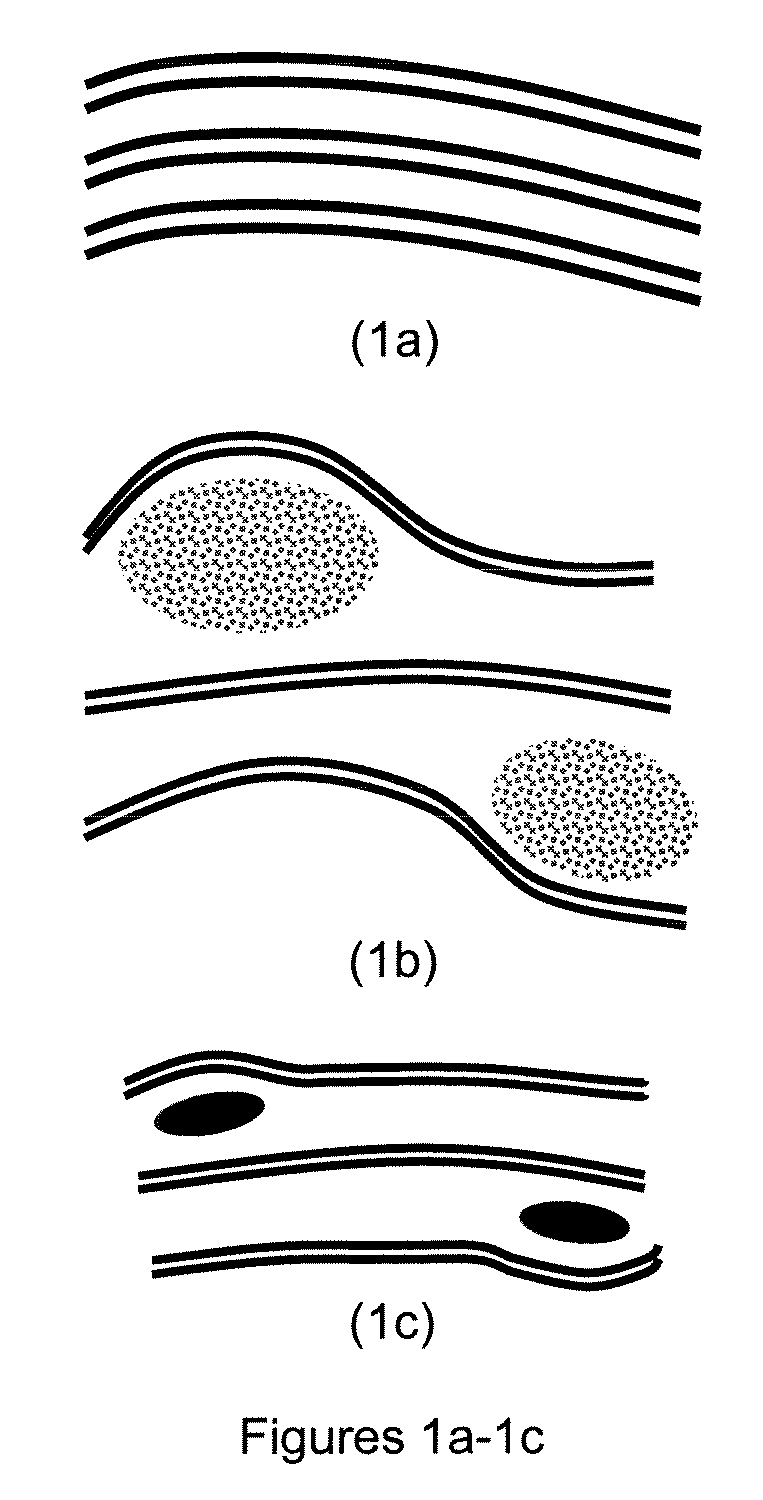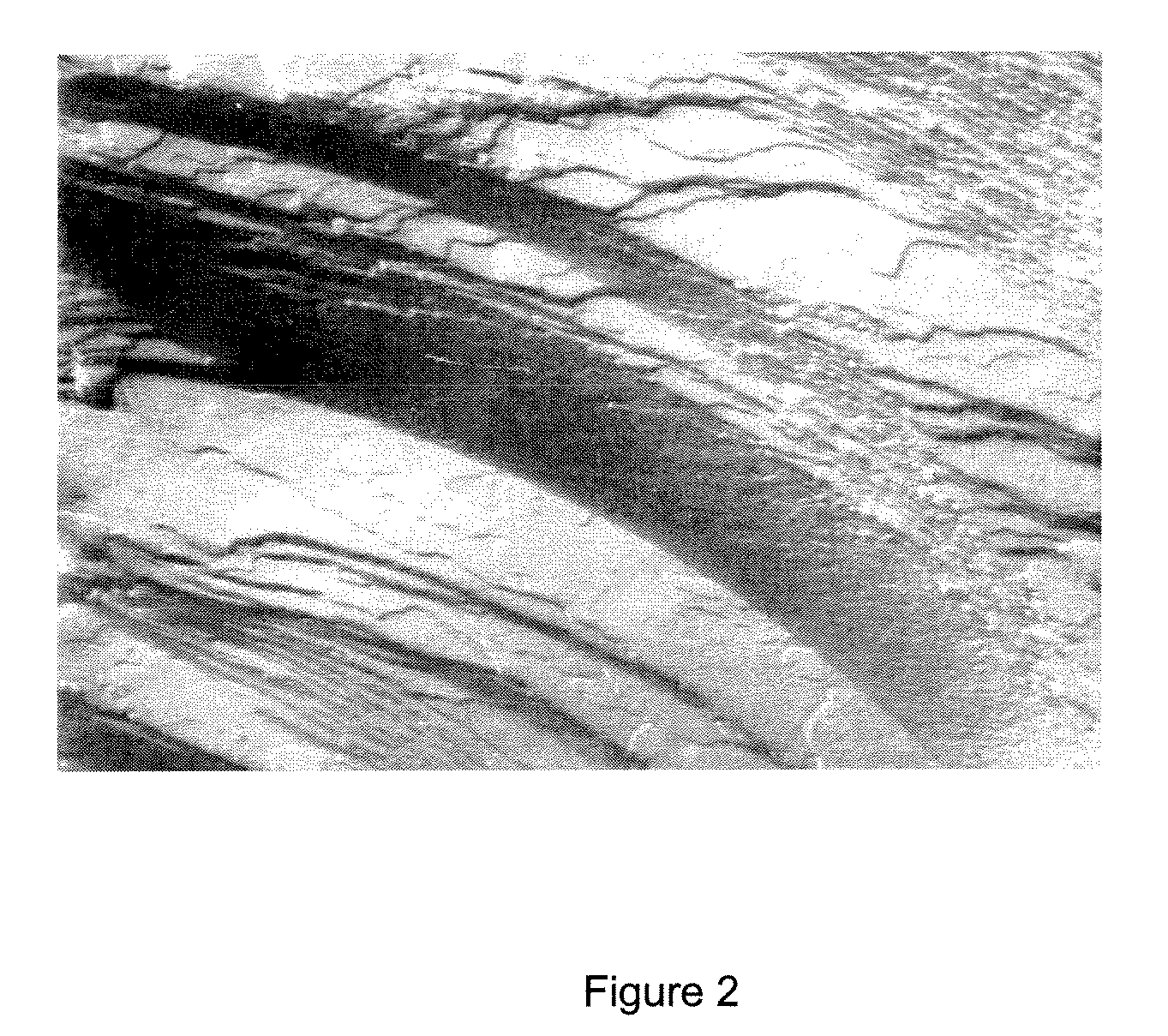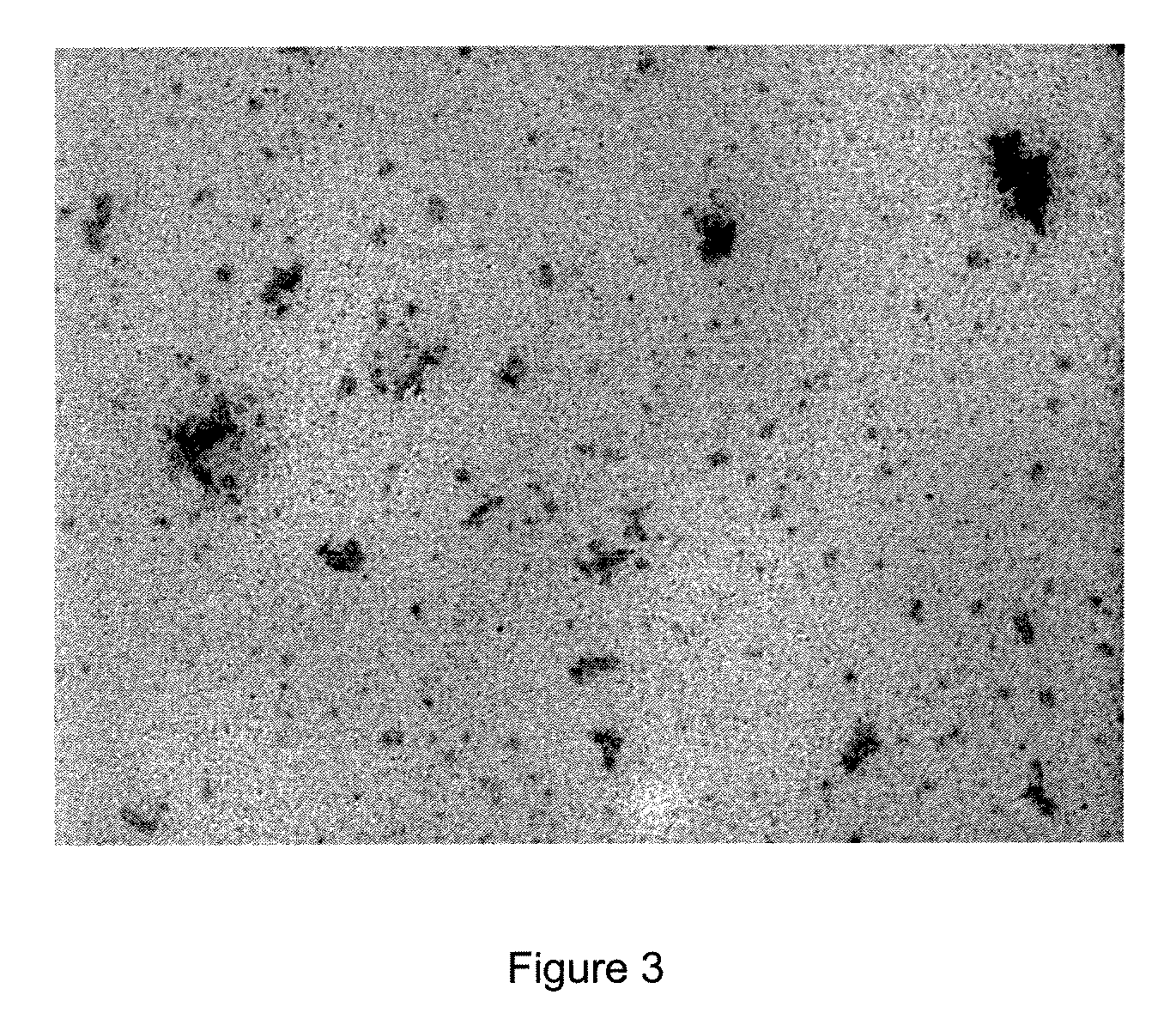Method for preparing anisotropic particles and devices thereof
a technology of anisotropic particles and devices, applied in the field of anisotropic particle preparation methods and devices thereof, can solve the problem of one nanoparticle formation, and achieve the effect of simplifying and more controllable procedures
- Summary
- Abstract
- Description
- Claims
- Application Information
AI Technical Summary
Benefits of technology
Problems solved by technology
Method used
Image
Examples
example 1
Preparation of CdS Nanoparticles in a Tube Reactor at a Flow Rate of 0.5 Cm3 / Sec
[0051]Synperonic A7 surfactant and 10 mM cadmium-nitrate solution were mixed together with a ratio of 70-30% and the mixture was poured to the top of the flow reactor. The flow rate of the surfactant solution was 0.5 cm3 / sec in the reactor. The flow rate of the 2% ammonium-sulfide reagent was set to a 20% fractional amount of the reagent. The manifestation of CdS particles in this procedure indicated individual nanoparticles with a diameter size of about 50-250 nm. In the nanoparticle bundle there were some particles for which the morphology was changed from that of a nanoparticle to that of a nanorod.
example 2
Preparation of CdS Nanoparticles in a Tube Reactor at a Flow Rate of 1.5 Cm3 / Sec
[0052]All of the properties for this example were the same as those reported for Example 1. The product of this Example 2 contains individual CdS nanoparticles with diameters of 15-60 nm, which is smaller than that found in the particles of Example 1, and a larger amount of regular nanorods with lengths of about 100-150 nm.
example 3
Preparation of CdS Nanoparticles in a Tube Reactor at a Flow Rate of 1.5 Cm3 / Sec with a 50% Fractional Amount of Cadmium Ions
[0053]Similar to Example 1, 70% Synperonic and 30% 10 mM cadmium-nitrate solution were mixed together and poured to the top of the reactor. The flow rate of the surfactant solution was 1.5 cm3 / sec, and the flow rate of the ammonium-sulphide reagent was set to 50% fractional amount of the cadmium ions. The manifestation of CdS nanocrystals indicates individual nanorods with lengths smaller than of the nanorods in Example 2.
PUM
| Property | Measurement | Unit |
|---|---|---|
| diameter | aaaaa | aaaaa |
| diameter | aaaaa | aaaaa |
| size | aaaaa | aaaaa |
Abstract
Description
Claims
Application Information
 Login to View More
Login to View More - R&D
- Intellectual Property
- Life Sciences
- Materials
- Tech Scout
- Unparalleled Data Quality
- Higher Quality Content
- 60% Fewer Hallucinations
Browse by: Latest US Patents, China's latest patents, Technical Efficacy Thesaurus, Application Domain, Technology Topic, Popular Technical Reports.
© 2025 PatSnap. All rights reserved.Legal|Privacy policy|Modern Slavery Act Transparency Statement|Sitemap|About US| Contact US: help@patsnap.com



